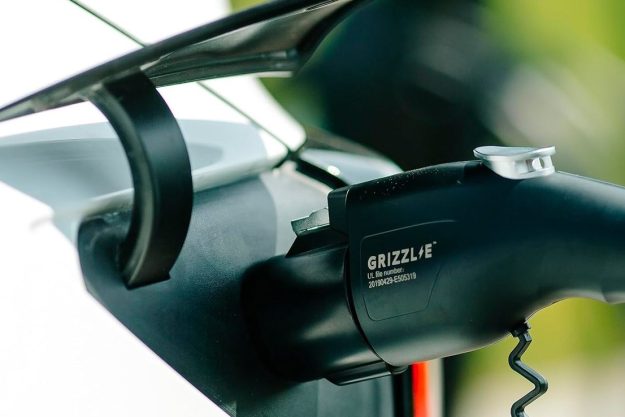At Digital Trends, we have to cut through hyperbole on a daily basis, but Faraday Future’s FF91 pre-production vehicle CES presentation was too much to handle.
The other day, in a packed hangar, journalists and other guests of Faraday Future gathered to see a car that was meant to finally quiet naysayers of the electric car company. But instead of silencing critics, it gave them a bunch of extra talking points.
The presentation was arrogant and grandiose. Nick Sampson, SVP of R&D at Faraday likened his Tesla-like electric car company to pioneers like Karl Benz and Tim Berners-Lee, people whose efforts “created a better future,” something the upstart automaker wishes to do by “dismantling the conventional concepts of automaking.”
The company then launched into a four-part, hour-long lecture on the capabilities of FF’s planned production vehicle. This was before we even saw the car.
Instead of silencing critics, Faraday Future gave them a bunch of extra talking points.
“While some people think [being] a new company puts us at a big disadvantage, we think that our clean sheet is one of our greatest strengths,” said Sampson, at the beginning of the exhaustive presentation. Fair enough.
There have been a lot of opinions, rumors, news, and speculation about Faraday Future since its debut at CES one year ago. We have heard that it could not meet its production deadline, that FF had no money left, and that construction of its production facility was halted due to late payments.
This was Faraday’s turn to have the floor and set the record straight. The company instead took wild swings at the automotive industry, put on a meaningless acceleration display, and bizarrely cited Wikipedia when it wanted to tout the acceleration of its all electric crossover against Tesla. Teachers don’t let students cite Wikipedia in their homework, so why is an automaker using it in a media presentation at the largest tech conference in the world. Faraday, couldn’t you find some actual Tesla stats?
“They doth protest too much” kept circling in my brain every time Faraday Future mentioned the detractors it wanted to prove wrong. There’s nothing wrong with stirring the pot, working to abandon fossil fuels, and developing a car that offers a multitude of convenience options, but Faraday’s presentation felt like little more than chest-thumping.
We’ve all encountered hyper-aggressive go-hards that bludgeon our senses with declarations of just how capable they are to mask a lack of confidence underneath. Like a petulant kid lambasting the older generation and its antiquated ideas, Faraday Future thinks it knows better than every company that came before it. It is failing to recognize the wisdom that comes from decades of experience.
Faraday has barely broken ground on its production factory. It showed a short, dramatic video of diggers moving earth and clearing the way for the intended factory, calling this the end of “phase one,” with phase two beginning “shortly,” but considering what we’ve heard so far about the company’s financial woes, we’re taking this claim with a grain of salt.
Faraday’s presentation felt like little more than chest-thumping.
Here’s the rub: the FF 91 is actually pretty amazing on paper.
With the equivalent of 1,050 horsepower available, autonomous parking and driving features, connectivity, and a heap of torque on tap, the FF 91 has a lot of things going for it. It doesn’t look half bad, either, even if it is a little too eccentrically styled for some tastes.
A new company promising to change the world is an easy target to pick on — and that’s without several devastating setbacks on its record. We know this because we’ve seen Tesla go through it all to get to where it is now. Faraday Future may yet become a major car company, but to get there, it needs to stop chest thumping, cut down on the extravagant language, and do something the automakers it likes to criticize at have long mastered: make cars.


